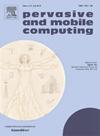Optimized secure and energy-efficient approach for IoT-enabled wireless sensor networks
IF 3.5
3区 计算机科学
Q2 COMPUTER SCIENCE, INFORMATION SYSTEMS
引用次数: 0
Abstract
Wireless communication is pivotal in the modern era, enabling seamless connectivity across diverse applications. However, the increasing complexity and sophistication of cyber threats pose significant challenges to the security of wireless communication systems. This paper proposes an innovative approach to enhance wireless communication security through integrating artificial intelligence (AI) techniques. First, we construct the network using the Horizontal Partitioning Sierpinski Triangle to reduce the network's high traffic and perform the authentication process. After successful authentication, we perform the clustering process and Game Theory-Driven Clustering (GT-DC) allows nodes to strategically optimize energy utilization while forming clusters as rational entities in a cooperative game. Perform the beacon injection and detect the attacks using the Improved Random Forest (IRF) that signifies the accurate identification of cyber-attacks, IRF is improving the Bootstrap Sampling, Class Weights, and Anomaly Score Threshold. In Routing implement Improved Cache LEACH Protocol (ICLP) which discovers the effective routing establishing the Cache nodes (Cn), to obtain optimal routing by lowering latency, improving data access, enhancing data reliability, and reducing data redundancy. The proposed work is compared with evaluation metrics such as authentication time, throughput, attack detection rate, energy consumption, packet delivery rate, and delay.
为支持物联网的无线传感器网络优化安全和节能方法
无线通信在现代时代至关重要,它可以实现跨各种应用程序的无缝连接。然而,日益复杂和复杂的网络威胁给无线通信系统的安全带来了重大挑战。本文提出了一种通过集成人工智能(AI)技术来增强无线通信安全性的创新方法。首先,我们使用水平分区的Sierpinski三角形构造网络,以减少网络的高流量,并执行认证过程。在认证成功后,我们执行聚类过程,博弈论驱动聚类(GT-DC)允许节点在合作博弈中作为理性实体形成集群的同时战略性地优化能源利用。执行信标注入并使用改进的随机森林(IRF)检测攻击,这意味着准确识别网络攻击,IRF正在改进Bootstrap采样,类权重和异常分数阈值。在路由方面,采用ICLP (Improved Cache LEACH Protocol)协议,通过建立缓存节点Cn (Cache nodes)来发现有效的路由,从而通过降低时延、提高数据访问、提高数据可靠性和减少数据冗余来获得最优路由。并与认证时间、吞吐量、攻击检测率、能耗、报文发送速率、时延等评估指标进行了比较。
本文章由计算机程序翻译,如有差异,请以英文原文为准。
求助全文
约1分钟内获得全文
求助全文
来源期刊

Pervasive and Mobile Computing
COMPUTER SCIENCE, INFORMATION SYSTEMS-TELECOMMUNICATIONS
CiteScore
7.70
自引率
2.30%
发文量
80
审稿时长
68 days
期刊介绍:
As envisioned by Mark Weiser as early as 1991, pervasive computing systems and services have truly become integral parts of our daily lives. Tremendous developments in a multitude of technologies ranging from personalized and embedded smart devices (e.g., smartphones, sensors, wearables, IoTs, etc.) to ubiquitous connectivity, via a variety of wireless mobile communications and cognitive networking infrastructures, to advanced computing techniques (including edge, fog and cloud) and user-friendly middleware services and platforms have significantly contributed to the unprecedented advances in pervasive and mobile computing. Cutting-edge applications and paradigms have evolved, such as cyber-physical systems and smart environments (e.g., smart city, smart energy, smart transportation, smart healthcare, etc.) that also involve human in the loop through social interactions and participatory and/or mobile crowd sensing, for example. The goal of pervasive computing systems is to improve human experience and quality of life, without explicit awareness of the underlying communications and computing technologies.
The Pervasive and Mobile Computing Journal (PMC) is a high-impact, peer-reviewed technical journal that publishes high-quality scientific articles spanning theory and practice, and covering all aspects of pervasive and mobile computing and systems.
 求助内容:
求助内容: 应助结果提醒方式:
应助结果提醒方式:


